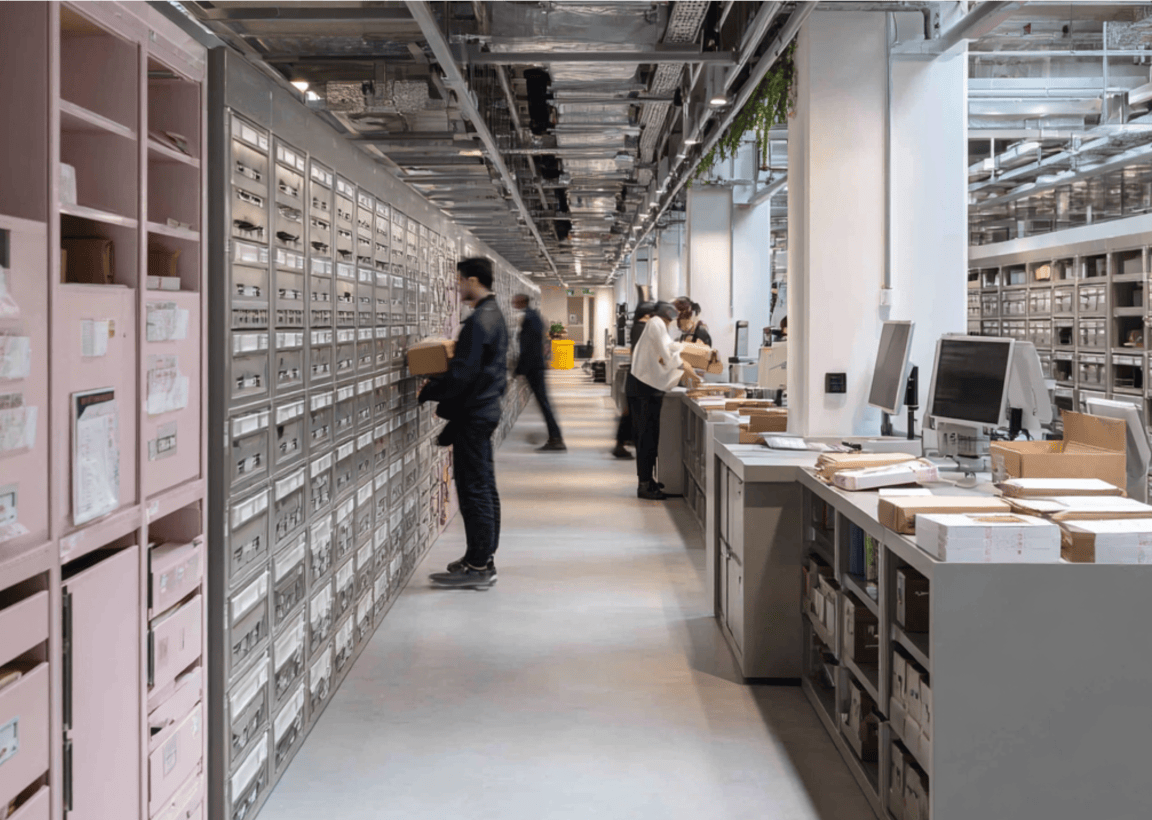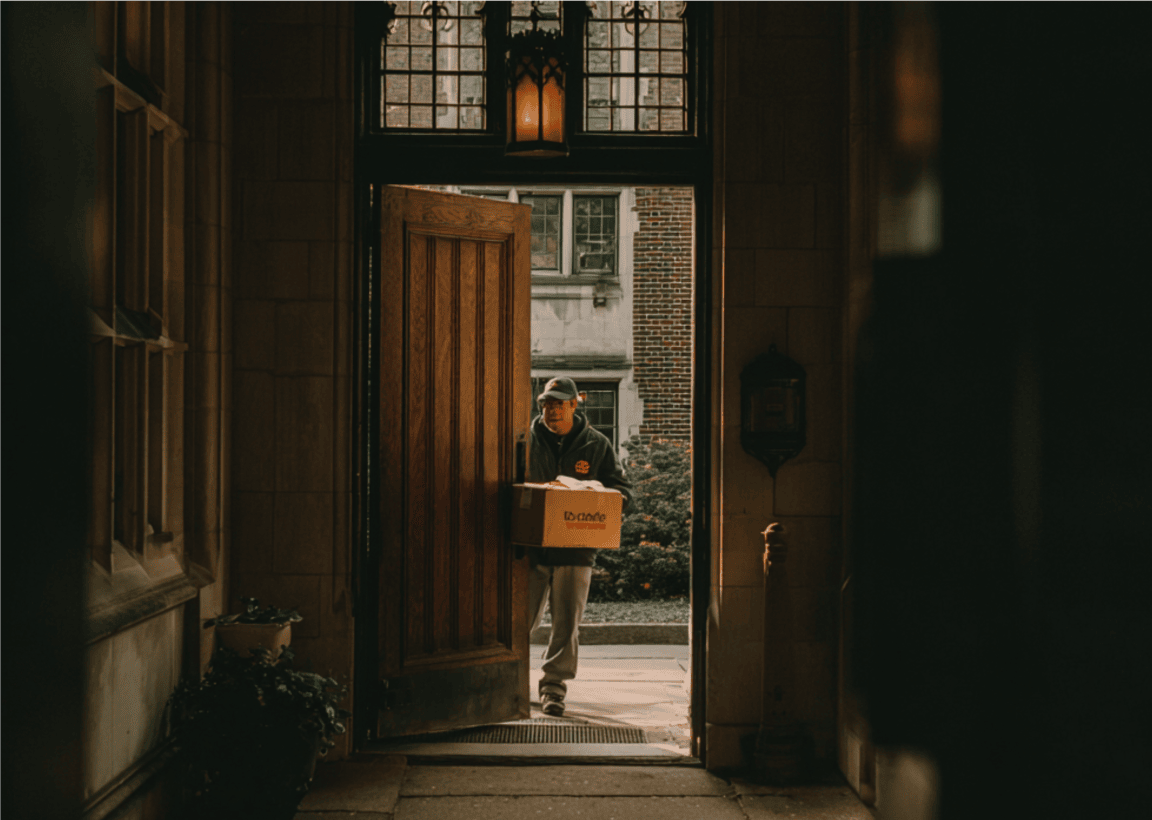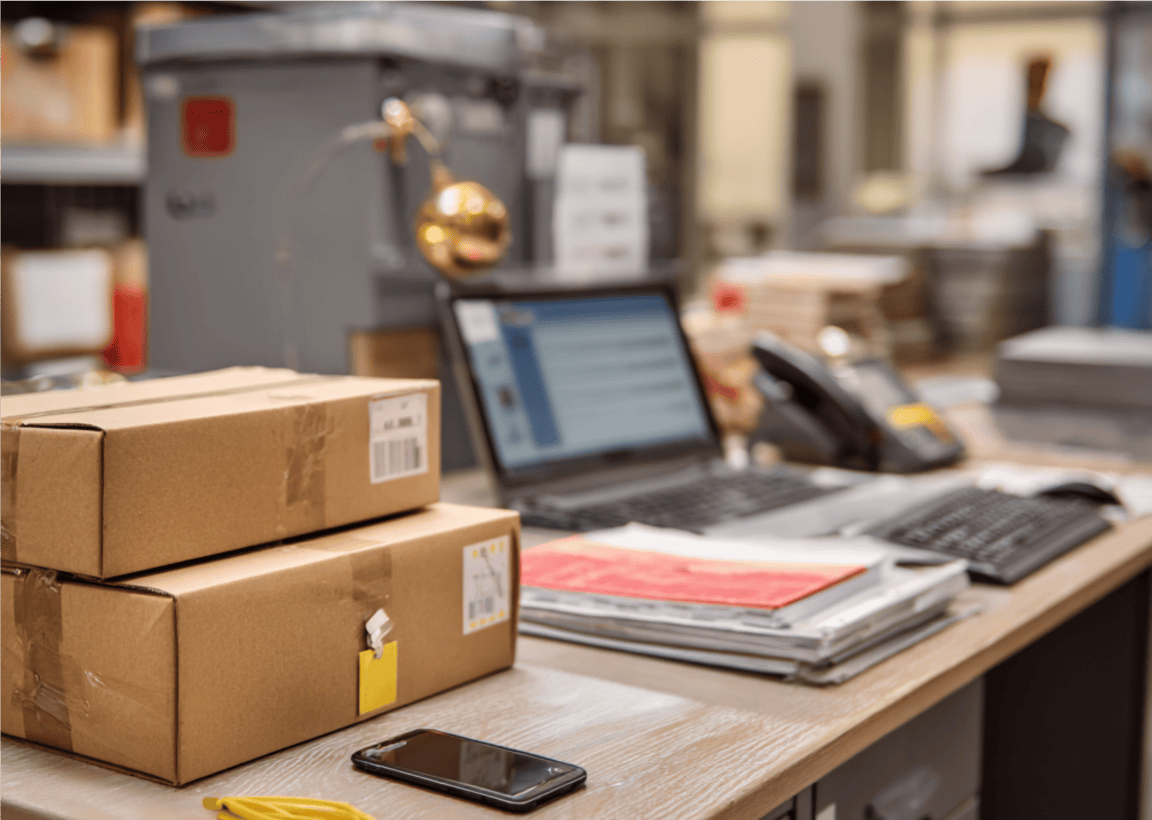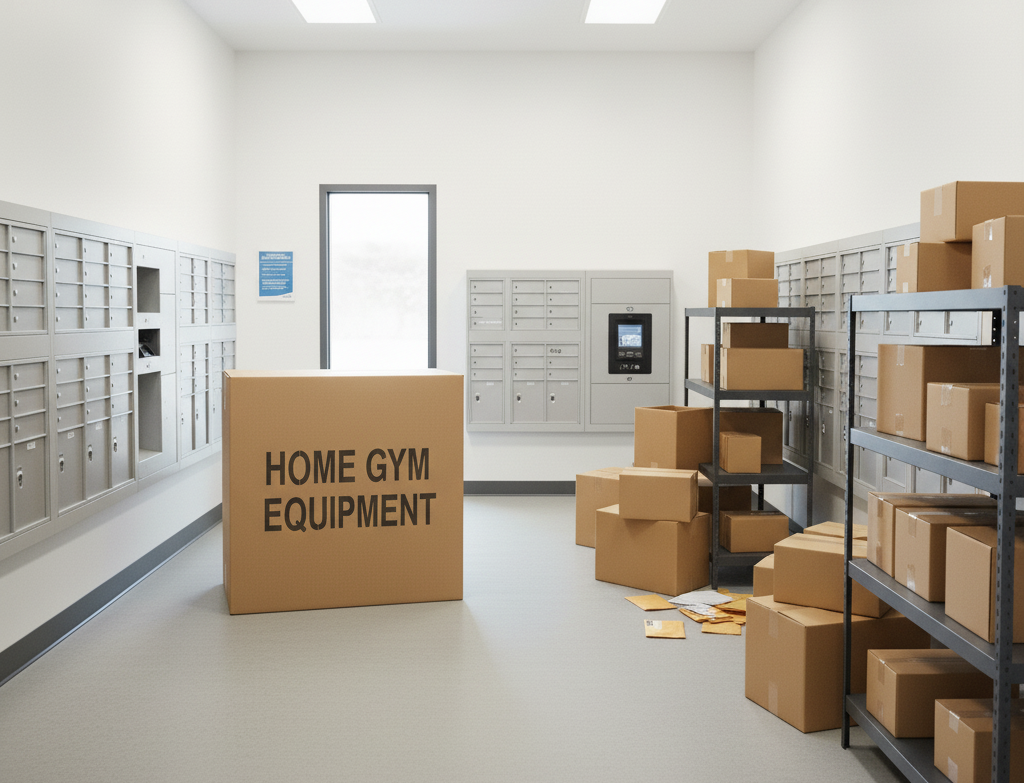What is the Last Yard of Delivery?

The journey of a package is often discussed in terms of "the last mile." This is critical leg of transportation from a distribution center to a recipient's address. However, for businesses, universities, and residential complexes, there's an even more granular and often more challenging segment, which is the last yard of delivery. This overlooked final stretch is where efficiency, security, and recipient satisfaction are truly won or lost.
It's the distance from the moment a package enters your building to when it reaches the intended recipient's hands. A bustling university mailroom during syllabus week receive hundreds, if not thousands, of packages daily, such as textbooks, essential supplies, care packages from home.
While the postal service or courier successfully navigated the "last mile" to the university's loading dock, the real test begins once those parcels are offloaded. This internal journey, the "last yard," is fraught with potential pitfalls that can lead to frustration, delays, and even lost items.

What Exactly is the "Last Yard of Delivery"?
The last yard of delivery refers to the final, internal phase of a package's journey. It begins when a package is received at a central point within a larger facility, like a corporate mailroom, a university's central receiving department, a co-working space, or a residential building's front desk, and ends the moment it is physically handed over to the designated recipient.
To put it simply, if the "last mile" is the journey to your front door, the "last yard" is the journey from your front door to the individual who ordered it. This distinction is crucial because the challenges and solutions for the last yard are entirely different from those encountered on the open road.
Key Characteristics of the Last Yard:
- Internal Logistics: It exclusively involves the movement and tracking of items within a single location.
- Recipient-Centric: Its primary goal is to ensure the package reaches the correct individual promptly and securely.
- Point of Common Failure: This stage is often where communication breaks down, packages get misplaced, or delivery notifications are delayed.

Why Does the Last Yard Matter So Much?
The last yard, despite its short physical distance, holds disproportionate importance for several reasons:
- Recipient Experience is Critical: This is the ultimate touchpoint. A perfectly executed last-mile delivery can be soured by a chaotic or inefficient last-yard experience. For students, residents, or employees, waiting anxiously for a package, a smooth internal hand-off reinforces a positive perception of your organization's efficiency and care. Conversely, delays or lost items lead to frustration and a poor experience.
- Operational Efficiency and Productivity: Manual last-yard processes are massive time sinks. Staff spend hours sorting, logging, notifying, and searching for packages. A study on logistics management's effect on organizational performance, while not specific to the last yard, points out that poorly managed logistics can significantly impact a company's assets and overall performance.
- Security and Accountability: Packages are highly vulnerable to loss, theft, or misplacement within the last yard. Without a robust system, establishing an audit trail or identifying where an item went missing becomes incredibly difficult. This is particularly critical for sensitive documents or high-value items. According to a survey by the National Association of College and University Business Officers (NACUBO), package management is a top operational concern for university mail services, largely due to security and accountability issues.
- Cost Implications: Failed deliveries within the last yard can be surprisingly expensive. They lead to repeated inquiries, staff time spent investigating, re-ordering items, and potentially compensation for lost goods. These hidden costs can quickly add up, impacting an organization's bottom line. According to a report from the Council of Supply Chain Management Professionals (CSCMP), U.S. business logistics costs reached a record $2.6 trillion in 2024, highlighting the enormous scale of logistics spending in the economy.
Challenges in Managing the Last Yard
The unique environment of internal package delivery presents a distinct set of challenges. Many organizations still rely on outdated manual methods, such as pen and paper logs, spreadsheets, or even sticky notes. These systems are inherently prone to human error, from misspellings and incorrect recipient details to simply forgetting to log a package.
Once a package is signed for at the main receiving point, its internal journey often becomes a black hole. Staff and recipients have no way of knowing its status or exact location within the building. Notifying recipients promptly and accurately can be a significant hurdle.
Generic email blasts or relying on recipients to check a central board are inefficient and often result in delayed pick-ups or a flood of "Where's my package?" inquiries. The sheer volume of packages, especially in large organizations or during peak seasons (e.g., student move-in at universities), can overwhelm manual systems.
Add to this the variety of carriers (USPS, FedEx, UPS, DHL, Amazon) and the increasing velocity of e-commerce deliveries, and the challenge intensifies. Mailrooms and receiving areas are often not designed to handle the modern influx of packages. This leads to cluttered spaces, difficult navigation, and increased risk of damage or misplacement.

How to Optimize the Last Yard of Delivery?
Overcoming these challenges requires a strategic shift from manual, reactive processes to automated mailroom management solutions. Technology is the key to transforming the last yard from a logistical headache into a seamless, efficient operation.
Mailroom Management Software: This specialized software is designed precisely to address the complexities of the last yard. It provides a comprehensive solution for managing incoming packages from the moment they arrive until they are safely in the recipient's hands.
Here’s how it helps:
- Automated Logging & Tracking: Staff can simply scan a package's label upon arrival. The software automatically logs its details, assigns it a unique internal tracking number, and captures essential information, eliminating manual data entry errors.
- Real-time Recipient Notifications: As soon as a package is logged, the system can automatically send an instant notification to the intended recipient via email or SMS, informing them that their package has arrived and is ready for pickup. This drastically reduces "where's my package?" inquiries.
- End-to-End Audit Trail: Every step of a package's internal journey (from arrival, to internal movement, to pickup) is recorded. This creates an inviolable audit trail, enhancing security and accountability, and making it easy to locate any package at any given time.
- Effortless Proof of Delivery: When a recipient picks up their package, they can digitally sign for it directly on a tablet or smartphone. This electronic proof of delivery is securely stored and easily retrievable, eliminating paper logs and disputes.
- Centralized Visibility: A comprehensive dashboard provides staff with a clear, real-time overview of all incoming, stored, and picked-up packages. This enables efficient sorting, retrieval, and proactive management of the entire process.
By implementing such a system, organizations can dramatically reduce the time spent on package management (some users report saving hours daily), minimize lost or misplaced items, and significantly enhance the overall experience for their recipients.

Strengthening the Last Yard of Delivery
The last yard of delivery, while often overlooked, is a critical component of the entire logistics chain. It's where the efforts of the "last mile" either culminate in success or falter due to internal inefficiencies. Mastering this final stretch is no longer a luxury but a necessity for any organization that handles a significant volume of incoming packages, from bustling university campuses to modern corporate offices.
Embracing a dedicated parcel management solution can transform your last yard operations into a streamlined, secure, and highly satisfying experience for everyone involved.
Is your organization struggling with the complexities of internal package delivery? Discover how a mailroom management software can transform your operations, enhance recipient satisfaction, and bring efficiency to your last yard.






